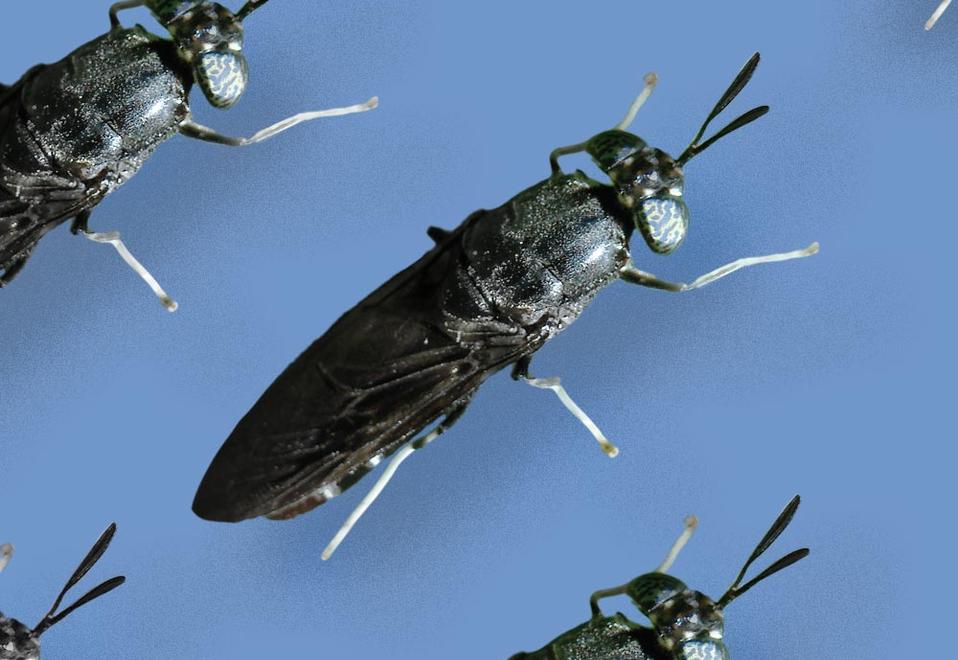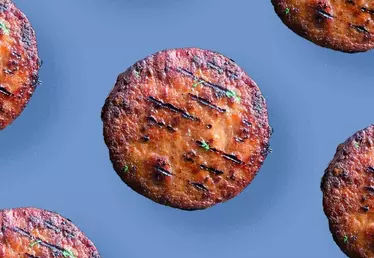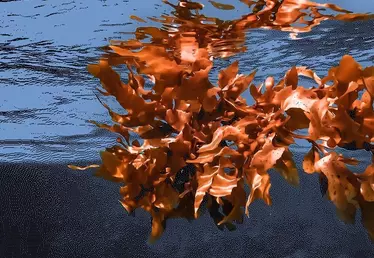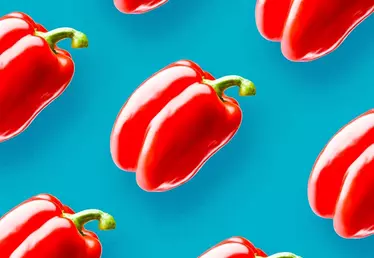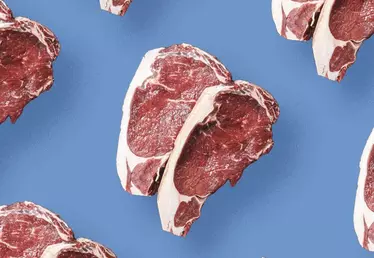
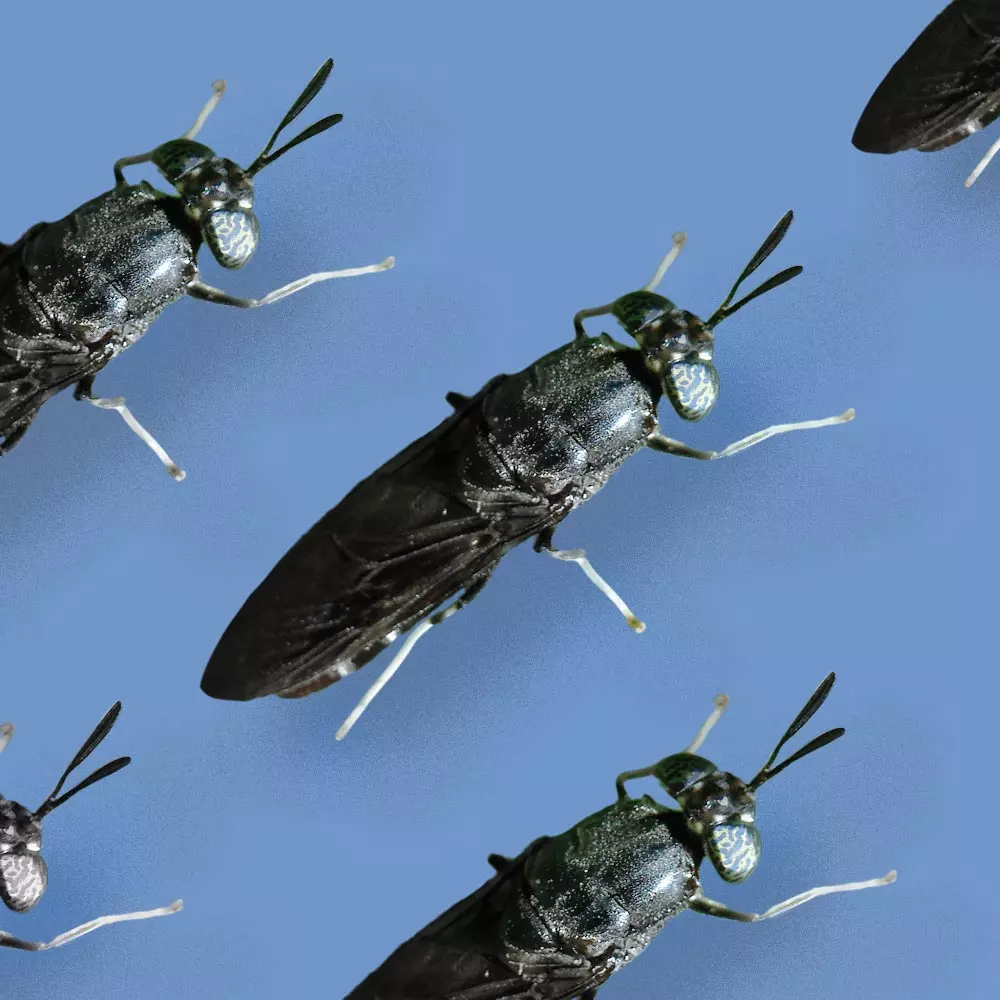
Hero banner custom title
Black soldier fly: the small bug with a big footprint
12 min
This tiny bug eats our waste, takes CO2 out of the food production cycle, and can be made into food, fuel and fertilizer.
“Many of my friends and family members think I’m crazy,” says Dr Marwa Shumo, “but I can’t stop talking about them. These creatures make gold out of trash.” Shumo is a devout expert in the black soldier fly. An R&D Scientist at the Leibniz Institute, known in her field as ‘Lady of the Flies’, she has been working with the species that is quickly becoming an alternative source of protein for the farming industry.
In the last few years, the black soldier fly has exploded from the ether as a popular source of protein-rich animal feed. The reasons are starkly apparent: by 2050, there will be 9.7 billion people on the planet. But only 5% of arable land is left on Earth, 30% of commercially fished fish stocks are being overfished, and a third of all food is thrown away. A food crisis is looming.
But black soldier flies may help to save the day. “They can eat anything,” explains Professor Jeff Tomberlin, the walls of his office in Texas lined with insect models. “I think that is their superpower, they do not shy away from the dining room table.” Native to the neotropics, black soldier flies not only thrive on whatever organic matter is provided, but the larvae can grow in size 15,000 times in just 2 weeks. “That’s like going from a human to a blue whale,” exclaims Tomberlin. In just 6 weeks, 1kg of eggs becomes 6 tons of larvae. “There’s more to this little bug than meets the eye.”
In just 6 weeks,
1kg
of black flies’ eggs becomes
6 tons
of larvae.
Good for the planet, good for the pig
Black soldier fly farming is carbon negative. This not only means it produces zero waste, redirecting organic waste headed for landfill and using it as fuel, but it uses or sells every part of its product. Plus, compared to the fish meal and soybean meal commonly used to feed livestock, the land use for black soldier fly farming decreases by a staggering 98%. “We don’t need fertile lands to grow them, unlike feed for livestock,” says Shumo, “it could be a garage, it could be a rooftop”. They are so easy to grow that some farmers now use them to feed livestock.
40-50% of a black soldier fly larvae’s dry matter weight is protein.
Naturally, chickens and pigs feed on insects, making black soldier fly farming today a step into the past, towards a more straightforward nutrient chain. Nutritionally, the flies are rich in vitamins and minerals and fatty acids. 40-50% of their dry matter weight is protein. They contain Lauric acid, micronutrients like copper, iron and magnesium, and are 5% calcium, particularly useful in the creation of eggshells within chickens. All their nutrients are bioavailable, and don’t have to be ingested to exist within them, unlike fish meal. They’re also safe, when managed judiciously, and are not known to be vectors of diseases or pests.
The fly’s the limit
For experts like Shumo and Tomberlin, the soldier fly’s potential reaches far beyond animal feed. Some facilities create organic fertilizer for plants nutrition, through insect bioconversion. In Malaysia, Entofood farms black soldier flies in their native habitat, Kuala Lumpur in the tropical belt. In the dense humidity, amongst lush green mountains, the larvae grow in wide trays of byproduct, and when hatched into flies, sit in their thousands on white sheets of netting, ready to be pulverised into oil or ground into fertilizer for plants. That, says Tomberlin, is the tip of the iceberg. They provide national security, through food security. “This little fly can create jobs and stabilize economies to help countries become independent of imports, to actually become exporters, to have an impact on the world stage even though they’re not from the West.” In light of the Covid-19 pandemic, argues Shumo, this is particularly prevalent: “If we think of food security as a matter of national security, it’s best to diversify our production systems, and to be able to do more with less, within our own borders.”
Beyond their powerful democratizing force, this small fly’s parts can be broken down, increasing its overall value. While unlikely to be on the menu for people, as tastes favor the more pleasantly textured cricket and mealworm, the protein that is isolated from the flies are extremely valuable. “We can use their lipids and fats in other kinds of industry,” says Shumo, “for example pharmaceuticals, or in production of cosmetics and cleaning detergents”. The unassuming fly is a powerful force for change: “this insect has the potential to revolutionize agriculture while protecting the environment”, says Tomberlin, “don’t let their appearance deceive you”.
Share it:







